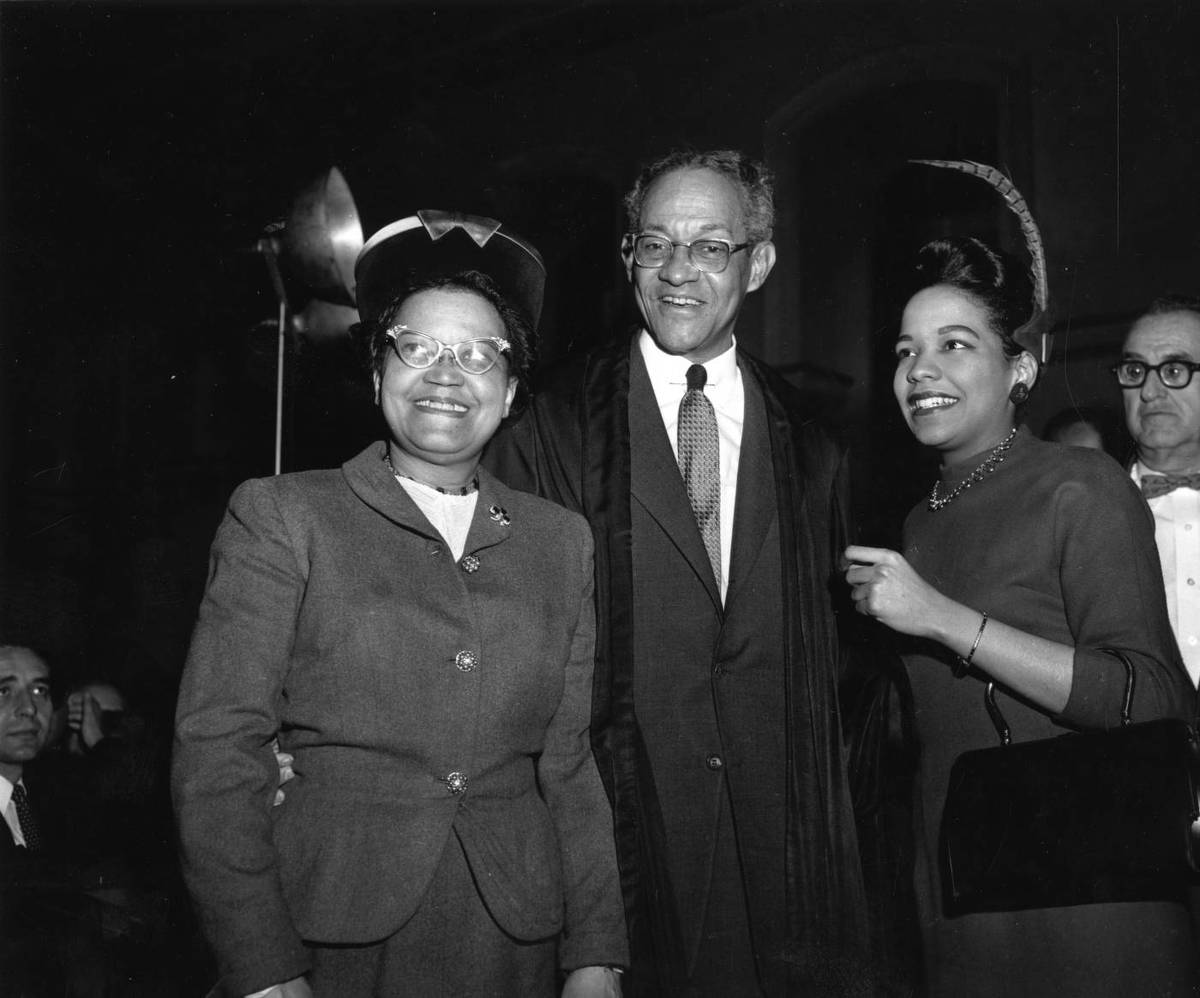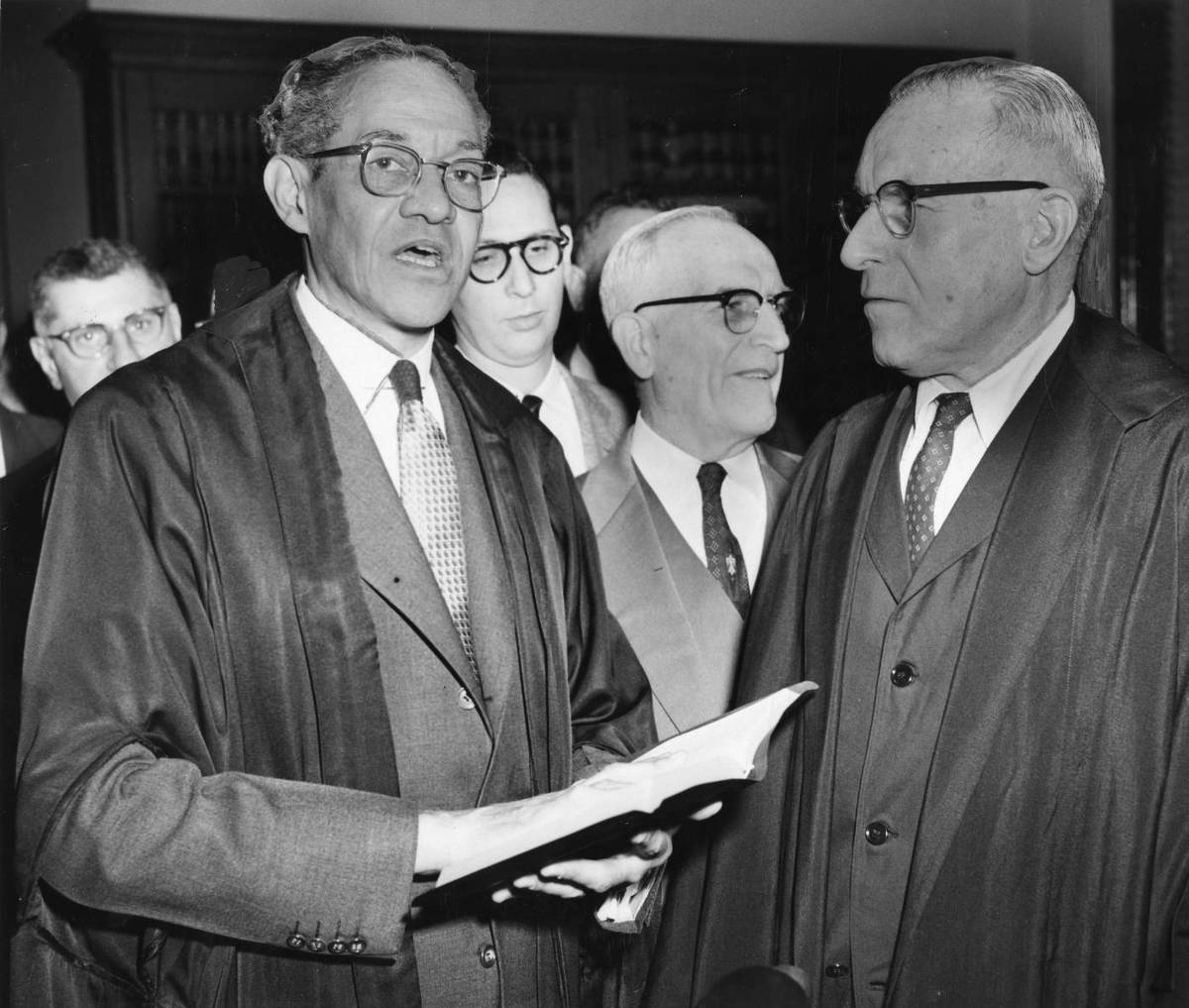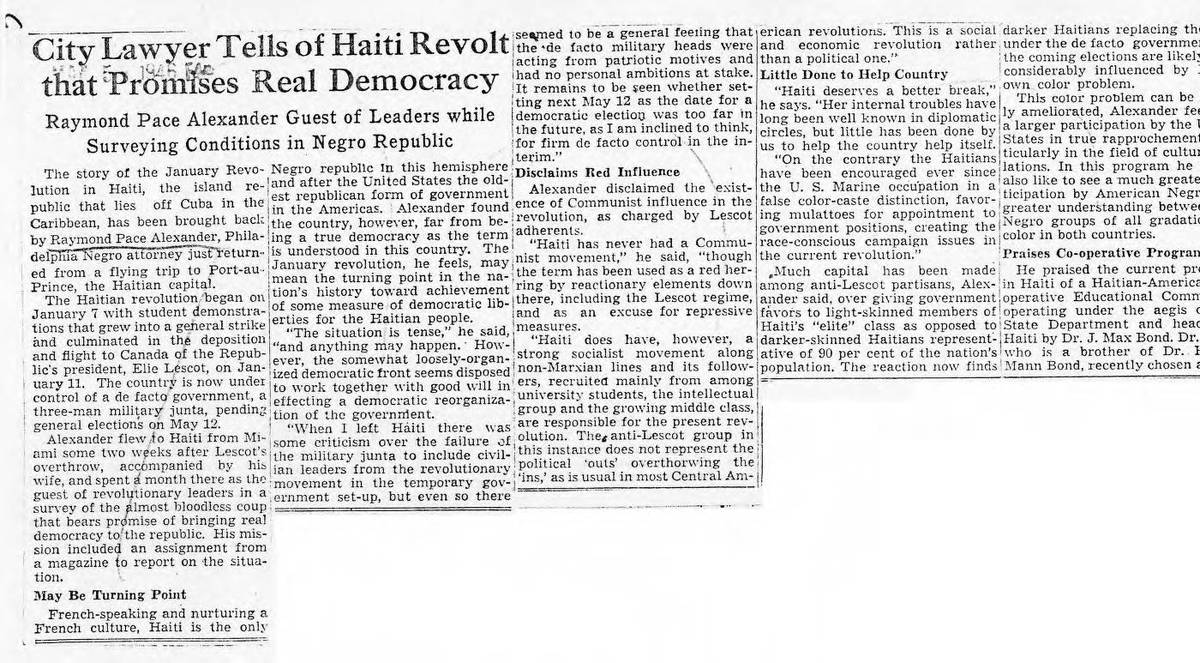Alexander, Raymond Pace
Raymond Pace Alexander (1897-1974) was a prominent lawyer, judge, and advocate for gaining civil rights through the law and peaceful demonstration. His influence in the arena of civil rights can be felt on local, national, and international levels.
Raymond Pace Alexander was born on October 13, 1897 in Philadelphia and began working at the age of seven, shortly after the death of his mother. Alexander’s work ethic and deep commitment to education were honed in his early years, as he worked delivering newspapers in the early morning hours before returning home for breakfast and then on to school. While attending Central High School for Boys, Alexander worked at the Metropolitan Opera House in North Philadelphia, which opened a new world to him and, as Alexander has stated, gave him “some of the smoothness and culture” which characterized his later years (Canton, p.8). Notably, while working at the Met and attending Central High School exposed Alexander to the upper-class white world, church provided him with a social and intellectual foundation in the black community and access to the black professional elite.
At fifteen, Alexander was invited to a lecture by historian Carter G. Woodson and William H. Lewis, which he described as having a lifelong impact on his personal and professional life. Woodson’s speech presented vast amounts of information about African and African-American history, which inspired Alexander greatly and laid the ideological foundation for Alexander’s civil rights’ campaigns. The other speaker, William H. Lewis, came from a background similar to Alexander’s and was regarded as the individual who motivated Alexander to choose law as a profession and mentored him as a black professional. Woodson and Lewis provided the inspiration and intellectual foundations that were formative to Alexander’s young adult years and led him to seek to marry his racial consciousness with the law as a basis for working for black equality and to eradicate racism.
In 1916, while in his junior year at Central, Alexander was awarded a four-year scholarship to attend the University of Pennsylvania, where he enrolled in the Wharton School of Business. After graduation, he entered Harvard Law School in 1920, where he was the only African American in his graduating class in 1923. As a student, Alexander was increasingly aware of civil rights issues and felt his “sense of injustice to Negroes spill to the point of public protest” (Canton, p.17).
After completing his first year of law school, Alexander brought his first civil rights suit on July 19, 1921 against Madison Square Garden for refusing him entry to its public facilities. Though the outcome of the case is unknown, the process of seeking justice through the courts led Alexander to conclude that the law was the best strategy to combat racism. Alexander passed the Pennsylvania Bar examination in July 1923 and in November he married Sadie Tanner Mossell, a fellow graduate of the University of Pennsylvania. The couple settled in Philadelphia where, despite Raymond’s influential contacts and stellar letters of recommendation, he was rejected by several law firms. The rejections merely made Alexander more determined to end segregation in Philadelphia and the nation. Three months after passing the bar, he opened his own law firm on Lombard Street in the Seventh Ward.
As a lawyer, Alexander was a pioneer in the city of Philadelphia, one of only twenty-five black lawyers in the city. In 1924, Alexander won a suit against the Aldine theater in Center City after the manager refused to admit Alexander and his friends on the basis of race; however, it was Alexander’s first criminal case which gained him national renown among African Americans. In the Louise Thomas case, Alexander secured a retrial for a defendant who had been sentenced to death and then, on retrial, won an acquittal from a white jury. The fact that Alexander prevailed in a case where a white attorney had been unsuccessful elevated his stature and helped combat the widespread belief that Negro lawyers were incompetent and incapable of prevailing in an all-white judicial system.
In October 1926, Alexander expanded his law firm and relocated to 19th and Chestnut Streets. In 1927, Sadie Tanner Mossell Alexander joined her husband’s growing firm as the first black female lawyer in Philadelphia and the Alexanders continued to establish themselves as leading advocates for civil rights both locally and nationally. Between 1924 and 1950, Raymond Pace Alexander was the lead on several celebrated criminal and civil rights cases, including the famed Trenton Six Case and suits against segregation in Chester County school districts. In 1933, he served as the attorney for a group of black parents in the suburb of Berwyn, Pennsylvania, who successfully boycotted to end segregation in their school district. Alexander also served as a legal advisor for the Brown vs. Board of Education case against public school segregation and, in 1951 was elected the first African American to represent North Philadelphia on City Council (Sullivan, p. 176). Alexander’s district notably included Girard College and he spearheaded efforts to end the school’s segregated admission policy from 1954 to 1958.
In 1959, Alexander became the first black judge appointed to the Common Pleas Court, ending his direct involvement in the campaign to desegregate Girard. In his first month as Judge, Alexander created an alternative probationary program called the Spiritual Rehabilitation Program (SRP) and appeared on the local television program "The Bulletin Forum" to discuss crime and punishment in Philadelphia. The SRP received national attention for its innovative approach combining the social work usually afforded criminals with the mutual aid tradition of black communities and religious organizations. In January 1960, Ebony, a national black magazine, selected Judge Alexander as one of the hundred most famous black leaders and that same month The Philadelphia Tribune published a front-page feature on Alexander and black attorneys in Philadelphia. Throughout his career, Alexander was often the subject of Tribune articles and the article in January 1960 notably detailed the civil rights cases that Alexander had litigated and reported on the impact that the civil rights movement in the South was having in Philadelphia.
In January 1963, Cecil B. Moore became the President of the Philadelphia Branch of the NAACP and, with his street protests and confrontational language, offered a marked contrast to Alexander’s legislative approach to civil rights. Moore and Alexander shared a contentious public relationship, with Moore often criticizing Alexander and others as “Uncle Toms,” and their differences in style were as much generational as political (Canton, p.147). By the 1960s, a new radicalism and demand for greater progress on civil rights energized the civil rights movement and leaders like Moore largely eclipsed Alexander and the campaigns he had undertaken decades earlier. Still, when Girard College finally desegregated in 1968, Moore invited Alexander to the victory rally in recognition of his contributions to the cause and calmed the crowd when they booed Alexander during the rally.
During the course of his career, Alexander’s tireless campaign for civil rights extended internationally as well through travels to destinations like Haiti and Eastern Europe. In July 1965, Alexander was appointed an American Specialist to Southeast Asia and India and served that position for the State Department until 1969. On Saturday November 25, 1974, Raymond Pace Alexander died at his desk after returning to his office from a meeting in New York.
Raymond Pace Alexander was committed to the use of the law to obtain civil rights for African Americans, as well as improving race relations. He was involved in the civil rights struggle long before it became a national movement and, until his death, Alexander continued his efforts to improve the plight of African Americans in Philadelphia and the world.
Learn more...
To view primary source materials about Raymond Pace Alexander and other topics in Philadelphia's civil rights history, search our collections.
References
“Alexander, Raymond Pace--Councilman--Girard College” folder. George D. McDowell Philadelphia Evening Bulletin newspaper clipping collection, Urban Archives, Temple University Libraries, Philadelphia, PA.
“Alexander, Raymond Pace--Miscellaneous--1960-1965” folder. George D. McDowell Philadelphia Evening Bulletin newspaper clipping collection, Urban Archives, Temple University Libraries, Philadelphia, PA.
“Alexander, Raymond Pace--Schools and Desegregation” folder. George D. McDowell Philadelphia Evening Bulletin newspaper clipping collection, Urban Archives, Temple University Libraries, Philadelphia, PA.
“Alexander, Raymond Pace--Speeches and Comments” folder. George D. McDowell Philadelphia Evening Bulletin newspaper clipping collection, Urban Archives, Temple University Libraries, Philadelphia, PA.
Canton, David A. Raymond Pace Alexander: A New Negro Lawyer Fights for Civil rights in Philadelphia. Jackson, MI: University Press of Mississippi, 2010.
Sullivan, Patricia. Lift Every Voice: the NAACP and the Making of the Civil Rights Movement. New York, NY: New Press, 2009.
Citing this essay
The material on this site is provided for private research use and is protected by the Copyright Law of the United States (Title 17, US Code). For proper use and reproduction of these materials, consult our Copyright and Citation Guide.




